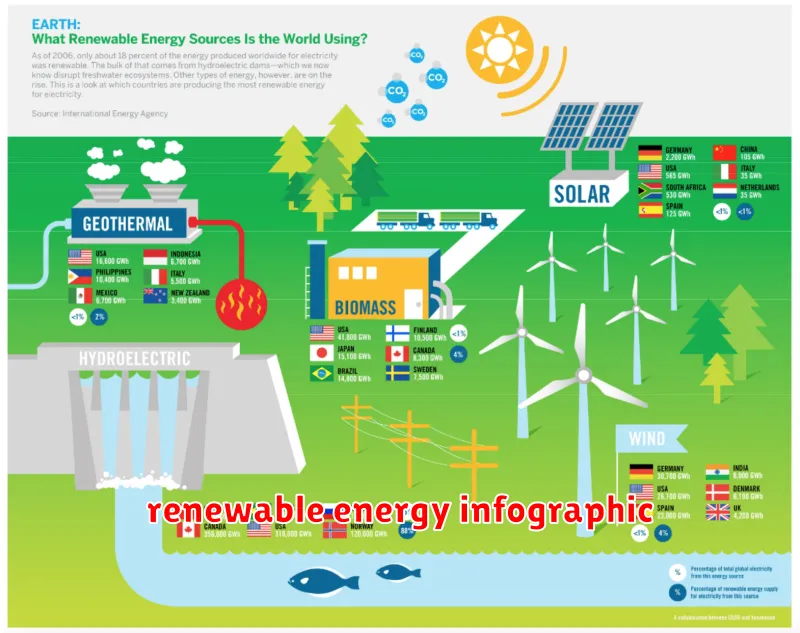The world is transitioning towards a cleaner, more sustainable future, and at the heart of this transformation lies the rapid advancement of renewable energy technology. From harnessing the power of the sun to tapping into the boundless energy of the wind, the possibilities seem endless. As we strive to combat climate change and reduce our dependence on fossil fuels, renewable energy is no longer just a buzzword; it’s the driving force behind a revolution in energy production.
This article delves into the hottest trends shaping the future of renewable energy, exploring cutting-edge technologies and innovations that are paving the way for a more sustainable tomorrow. We’ll examine breakthroughs in solar energy, wind energy, hydropower, and emerging fields like bioenergy and geothermal energy. Get ready to be amazed by the remarkable progress being made in this exciting and rapidly evolving sector.
Harnessing the Power of the Sun: Advancements in Solar Energy
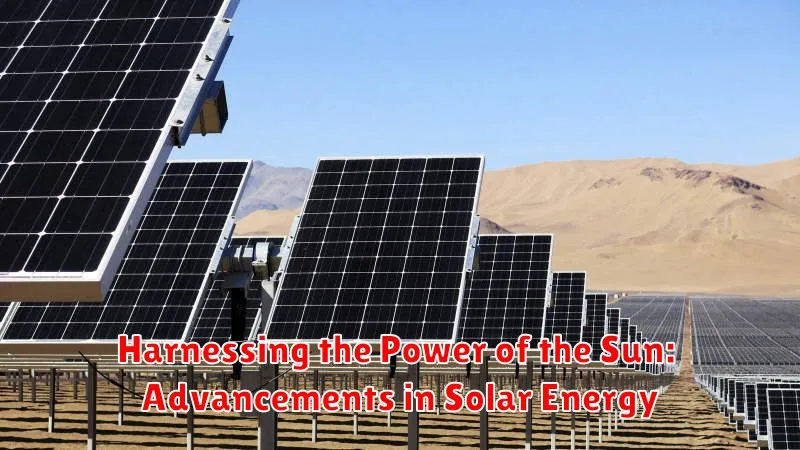
Solar energy, the sun’s boundless gift, has rapidly evolved from a niche technology to a cornerstone of a sustainable future. In recent years, innovations have driven down costs, boosted efficiency, and expanded the reach of solar power, making it an increasingly viable option for homes, businesses, and even entire grids.
One key development has been the rise of photovoltaic (PV) solar cells, which convert sunlight directly into electricity. These cells are becoming more efficient, with higher conversion rates translating into more power generated from the same amount of sunlight. Thin-film solar cells, known for their flexibility and potential for large-scale production, are also making strides, with advancements in materials and manufacturing techniques improving their efficiency and durability.
Another transformative trend is the increasing adoption of concentrated solar power (CSP), which uses mirrors to concentrate sunlight and generate heat. This heat can then be used to drive turbines and produce electricity, allowing for large-scale power generation even in regions with limited sunlight. CSP systems are also capable of storing thermal energy, ensuring a consistent power supply even after sunset.
Beyond technological advancements, the integration of solar energy into existing infrastructure is a key driver of its growth. Smart grids, with their ability to monitor and manage energy flows in real time, are facilitating the integration of solar power into the grid, ensuring its seamless and reliable delivery. Solar farms are increasingly being built on a large scale, providing a stable source of renewable energy for entire communities.
With its vast potential and ongoing advancements, solar energy is poised to play a leading role in meeting our global energy needs while reducing our reliance on fossil fuels. From rooftop installations to sprawling solar farms, the future of energy is bright, powered by the boundless energy of the sun.
Beyond the Blades: The Evolution of Wind Turbine Technology
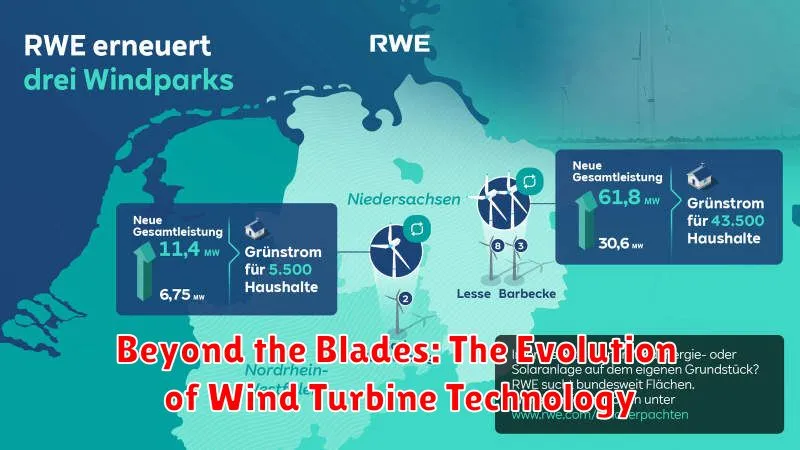
Wind energy, once a nascent concept, has become a cornerstone of renewable energy, and its evolution is a testament to human ingenuity. At the heart of this transformation lies the advancement of wind turbine technology. While the iconic blades remain a key component, innovation has gone beyond the surface, leading to breakthroughs that are unlocking the true potential of this clean energy source.
One of the most significant advancements is the rise of offshore wind turbines. These towering structures, some reaching heights surpassing skyscrapers, are capable of harnessing stronger and more consistent wind speeds found at sea. The development of specialized foundations and advanced blade designs has allowed these turbines to withstand the harsh marine environment, opening up vast new energy reserves.
Beyond size and location, the focus has shifted towards efficiency and smarter operation. Innovations such as variable-speed rotors and active yaw control allow turbines to adapt to changing wind conditions, maximizing energy production while minimizing noise and visual impact. Smart grids, with their ability to integrate wind energy seamlessly, are further enhancing the efficiency of wind power systems.
The future of wind energy technology is even more exciting. Research into floating wind turbines promises to unlock the vast wind resources in deeper oceans. Bladeless wind turbines, utilizing aerodynamic principles to capture wind energy without traditional blades, are attracting significant attention for their potential to reduce noise and environmental impact.
The evolution of wind turbine technology is not just about increasing power output; it’s about making wind energy more efficient, reliable, and environmentally friendly. As we continue to push the boundaries of innovation, wind energy is poised to play an even greater role in shaping a sustainable future.
The Rise of Green Hydrogen: A Fuel for the Future

In the quest for a sustainable future, renewable energy technologies are rapidly advancing, and among them, green hydrogen stands out as a promising fuel source. Green hydrogen, produced through electrolysis using renewable electricity, is gaining traction as a clean and versatile energy carrier.
The potential of green hydrogen is vast. It can be used in various sectors, including transportation, industry, and power generation. In transportation, hydrogen fuel cells power vehicles with zero emissions, making them an attractive alternative to traditional gasoline-powered cars. In industry, hydrogen can be used as a feedstock for producing sustainable fuels and chemicals, reducing reliance on fossil fuels.
Furthermore, green hydrogen can be stored and transported efficiently, overcoming the intermittency challenges of renewable energy sources like solar and wind. This makes it a valuable asset for grid stability and energy security.
While the technology is still in its early stages, significant progress is being made in reducing production costs and increasing efficiency. As the demand for clean energy grows, green hydrogen is poised to play a pivotal role in the transition to a sustainable future.
Ocean Energy: Tapping into the Untapped Potential of the Sea
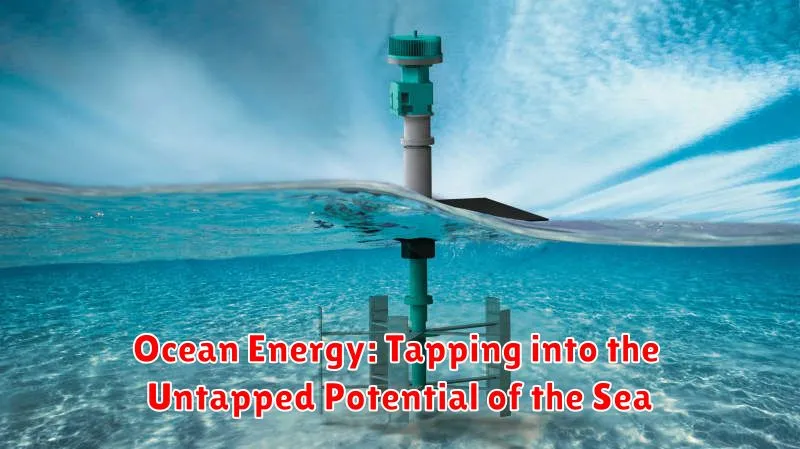
The ocean, a vast and powerful force, holds immense untapped potential for renewable energy. Ocean energy, derived from the kinetic and thermal energy of the sea, presents a promising solution to our ever-growing energy demands. As the world seeks sustainable alternatives to fossil fuels, ocean energy emerges as a viable and increasingly attractive option.
There are several forms of ocean energy, each harnessing a different aspect of the ocean’s power. Wave energy captures the motion of waves, converting it into electricity. Tidal energy utilizes the rise and fall of tides to generate power. Ocean thermal energy conversion (OTEC) leverages the temperature difference between warm surface waters and cold deep waters to produce electricity. And current energy harnesses the kinetic energy of ocean currents.
The benefits of ocean energy are numerous. It is a renewable resource, meaning it is naturally replenished, unlike fossil fuels. It is also clean and sustainable, producing no greenhouse gas emissions. Furthermore, ocean energy offers significant potential for job creation and economic development in coastal communities.
While still in its early stages of development, ocean energy technology is rapidly advancing. With continued research and investment, we can unlock the full potential of this powerful and sustainable energy source. The future of energy is bright, and the ocean holds the key to a cleaner, more sustainable future.
Geothermal Energy: Harnessing the Earth’s Heat

Geothermal energy is a powerful and sustainable source of renewable energy that taps into the Earth’s internal heat. This heat, generated from the planet’s core, rises to the surface through various geological processes, providing a consistent and reliable energy source.
Geothermal power plants utilize this heat to generate electricity. Direct-use geothermal systems harness the heat directly for purposes like space heating and agricultural applications. These systems are particularly effective in regions with high geothermal activity.
The advantages of geothermal energy are numerous. It’s a clean and sustainable energy source, emitting significantly fewer greenhouse gases compared to fossil fuels. It’s also reliable and consistent, operating 24/7 regardless of weather conditions. Furthermore, geothermal energy has a relatively low environmental impact, as it doesn’t require large tracts of land like solar or wind energy projects.
However, the development of geothermal energy faces challenges. High upfront costs are often associated with drilling and construction. The geographic constraints limit its accessibility to areas with suitable geothermal resources. Research and development are ongoing to mitigate these challenges and further enhance the efficiency and affordability of geothermal energy.
Geothermal energy holds great potential as a significant contributor to the transition towards a clean energy future. By harnessing the Earth’s heat, we can unlock a sustainable and reliable energy source that will play a vital role in combating climate change and ensuring a more sustainable energy landscape.
Sustainable Energy Storage: Batteries Included
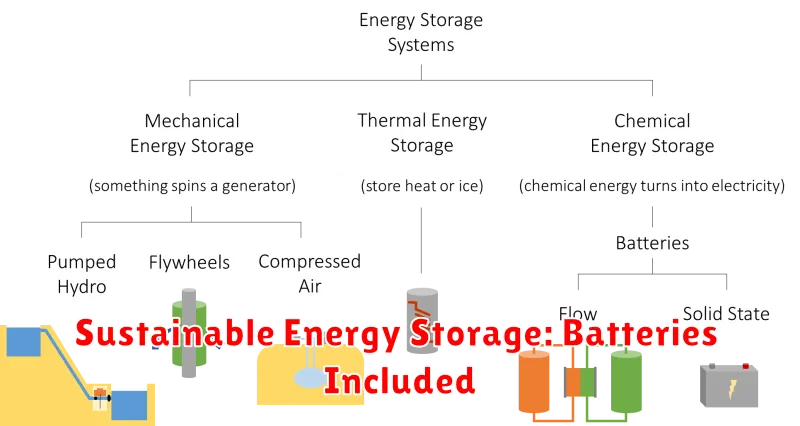
The transition to a cleaner energy future hinges on our ability to effectively store renewable energy, and batteries are playing a pivotal role in this exciting journey. As the world embraces solar and wind power, the need for reliable and efficient energy storage solutions becomes increasingly crucial.
Battery technology is rapidly evolving, offering a diverse range of options to meet specific energy storage needs. From lithium-ion batteries, which dominate the market today, to emerging technologies like flow batteries and solid-state batteries, the future of energy storage is brimming with innovation.
Lithium-ion batteries, known for their high energy density and efficiency, are widely used in electric vehicles, grid-scale storage, and portable electronics. However, their reliance on limited resources and potential environmental concerns have spurred research into alternative battery chemistries.
Flow batteries, which store energy in liquid electrolytes, offer scalability and long lifespans, making them ideal for large-scale grid storage. Solid-state batteries, with their enhanced safety and potential for higher energy density, are attracting significant attention as a promising future technology.
Beyond technological advancements, the energy storage landscape is witnessing a surge in policy support and industry investment. Governments worldwide are incentivizing battery production and deployment, while private companies are pouring resources into developing innovative solutions.
As we continue to explore and refine these technologies, the future of sustainable energy storage looks incredibly bright. Batteries are poised to play a transformative role in shaping a cleaner, more resilient energy future for generations to come.
Smart Grids: Optimizing Energy Distribution and Consumption
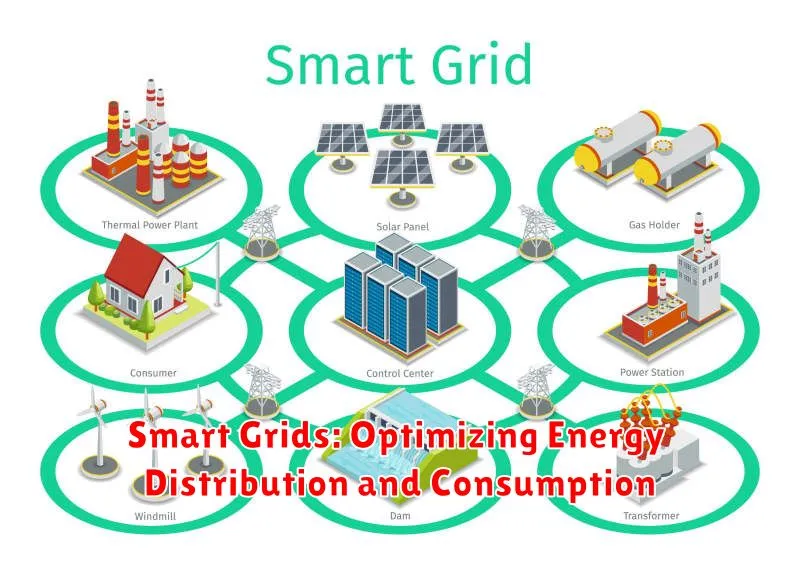
The transition to a sustainable energy future hinges on advancements in renewable energy technologies, and among them, smart grids stand out as a crucial component. These modern power grids leverage advanced technologies like sensors, data analytics, and communication systems to optimize energy distribution and consumption, paving the way for a more efficient and reliable energy landscape.
Smart grids offer several key advantages that enhance energy management:
- Enhanced Reliability: Real-time monitoring and control capabilities enable quick identification and response to disruptions, minimizing outages and ensuring continuous power supply.
- Improved Efficiency: Smart grids enable optimized energy flow, minimizing transmission losses and reducing overall energy consumption.
- Increased Integration of Renewable Energy: They facilitate seamless integration of intermittent renewable energy sources like solar and wind power, promoting a cleaner and more sustainable energy mix.
- Empowered Consumers: Smart grids empower consumers to actively manage their energy consumption, allowing them to track usage, adjust consumption patterns, and even participate in demand response programs.
In essence, smart grids are a cornerstone of a sustainable energy future, playing a vital role in maximizing the potential of renewable energy sources while ensuring reliable and efficient energy distribution. As we move towards a greener and more sustainable energy landscape, smart grids will be instrumental in shaping a brighter future powered by renewable energy.
The Role of Artificial Intelligence in Renewable Energy
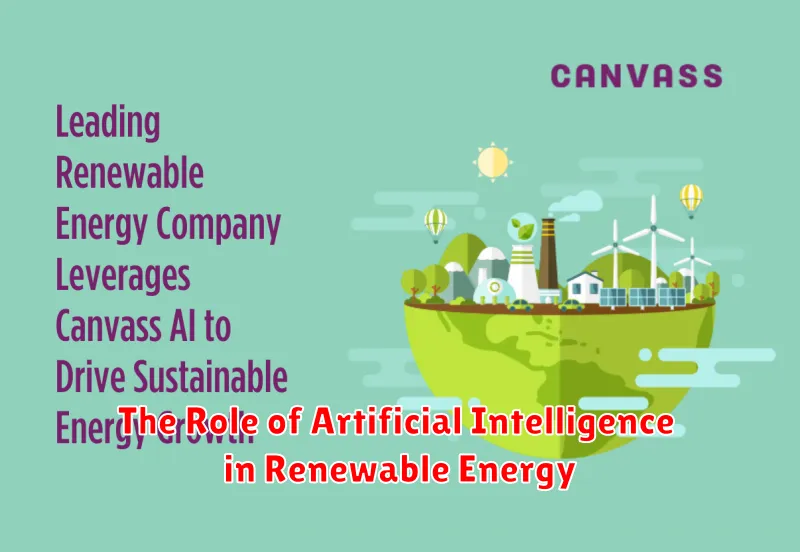
The sun, wind, and water are abundant sources of clean energy, and artificial intelligence (AI) is playing a pivotal role in unlocking their full potential. AI is revolutionizing renewable energy by optimizing operations, improving efficiency, and driving down costs.
One of the key ways AI is impacting renewable energy is through predictive maintenance. By analyzing sensor data from wind turbines, solar panels, and other renewable energy infrastructure, AI algorithms can identify potential problems before they occur. This proactive approach reduces downtime, minimizes costly repairs, and ensures the smooth operation of renewable energy systems.
Furthermore, AI is empowering smart grids, making them more efficient and responsive to the changing demands of renewable energy sources. AI algorithms can analyze real-time energy consumption data and predict future demand, allowing grid operators to optimize energy distribution and minimize waste.
AI is also proving crucial in optimizing the performance of renewable energy systems. For instance, AI-powered algorithms can analyze weather data and adjust the tilt of solar panels to maximize energy production. Similarly, AI can optimize the operation of wind farms by identifying optimal wind patterns and adjusting turbine blade angles accordingly.
The role of AI in renewable energy is expanding rapidly, and its impact will continue to grow in the years to come. By leveraging the power of AI, we can accelerate the transition to a clean energy future and create a more sustainable world.
Renewable Energy Investment: Funding a Sustainable Future
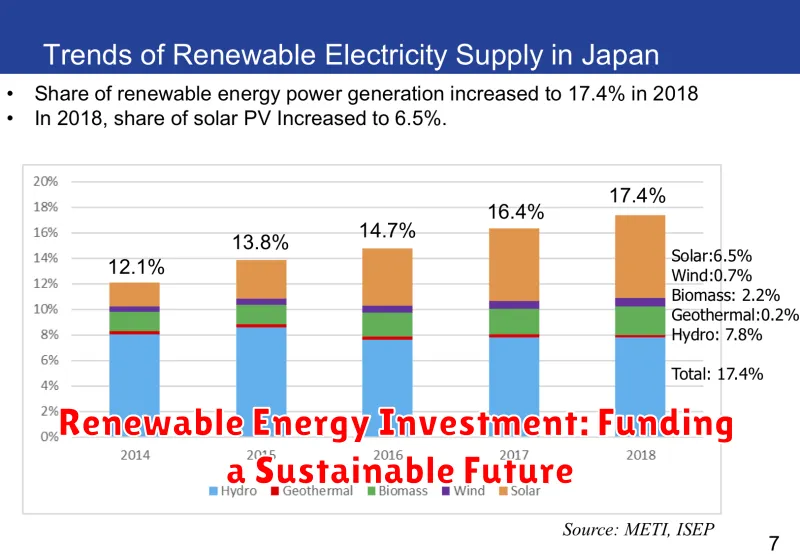
The transition to a sustainable future is undeniably reliant on the growth of renewable energy sources. As the world seeks to reduce its carbon footprint and mitigate climate change, the demand for clean and sustainable energy solutions is surging. This shift presents a unique opportunity for investors, as the renewable energy sector is poised for significant growth and innovation.
Investing in renewable energy technologies like solar, wind, hydro, and geothermal offers a compelling path toward a more sustainable future. These investments not only contribute to environmental preservation but also stimulate economic growth and job creation in the clean energy sector. However, the upfront costs associated with renewable energy projects can be substantial, requiring substantial funding to bring these projects to fruition.
Fortunately, a diverse range of financing mechanisms are available to bridge this gap. Government subsidies, tax incentives, and green bonds provide crucial support for renewable energy projects. Private equity and venture capital are also playing increasingly important roles, particularly in supporting the development of innovative technologies. The rise of crowdfunding platforms further democratizes access to renewable energy investments, allowing individuals to participate in projects that align with their values.
With the growing global commitment to climate action, the future of renewable energy investment looks exceptionally bright. Continued investment in this sector will drive technological advancements, reduce costs, and enhance the accessibility of clean energy solutions. As we move towards a more sustainable future, the role of investors in supporting renewable energy projects becomes increasingly critical.
The Future of Transportation: Electric Vehicles and Beyond
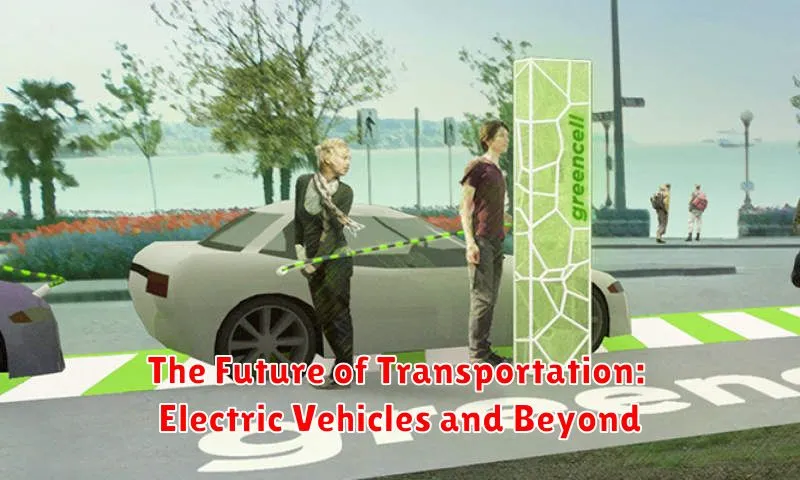
The transportation sector is undergoing a monumental shift, with electric vehicles (EVs) taking center stage. Driven by concerns about climate change and the need for sustainable mobility, EVs are rapidly gaining popularity worldwide.
Beyond the widespread adoption of EVs, the future of transportation holds even more exciting possibilities. Autonomous vehicles, or self-driving cars, are rapidly advancing, promising safer and more efficient transportation.
Another key trend is the rise of micro-mobility, encompassing electric scooters, bicycles, and other smaller vehicles. These options provide convenient and eco-friendly solutions for short-distance travel in urban environments.
Looking further ahead, flying cars and hyperloop systems are emerging as potential game-changers. These innovative technologies offer the promise of faster and more efficient travel, especially for long distances.
The future of transportation is bright, characterized by technological advancements, sustainability, and a commitment to creating a more efficient and environmentally friendly mobility system.

